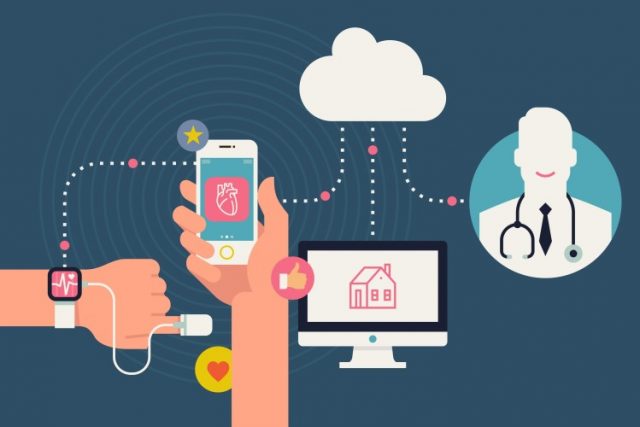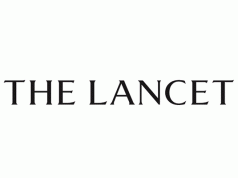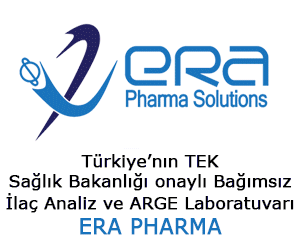2017 – Amazing year for science and healthcare
Scientists, researchers, and innovators come up with amazing breakthroughs every year, and that was no different in 2017 either. No matter whether we look at physics (proving the existence of gravitational waves), astronomy (discovering new planets) or biology (detecting a fluorescent frog in Brazil), we come across mind-blowing scientific findings everywhere. Healthcare was no exception, moreover, some say the field of medicine is one of the most innovative fields today.
Looking back at our expectations in digital health for 2017 in terms of trends, innovations or breakthroughs, there were at least three developments and three trends which proved to be foresightful. The beginning of a new era in diabetes care is upon us with the realities of the FDA-approved artificial pancreas or such small, but significant innovations as a glucose monitor built into phone cases. Artificial narrow intelligence (ANI), mainly computer vision and natural language processing, started to take its place in healthcare – in spite of such bumps on the road until widespread use as overhyping the technology. Precision medicine is incrementally reshaping cancer care methods: DNA-tests from tumors and patients are used to work out targeted treatments in the fight against cancer.
Moreover, I predicted that a health insurance company will launch a package which will include fitness trackers and wearables; that a big tech company will step up its efforts in digital health; and further steps will be made in the development of the CRISPR genome-editing method. Although we still have to wait for the first clinical trials, New Scientist already reported in April 2017 that there are as many as 20 human trials underway, mostly in China. But I rushed ahead of myself. Let’s dive into the details step by step!
If you prefer videos, here are the top 5 stories described in less than 3 minutes:
1) Canada started to embrace digital health
New technological solutions and breakthrough methods produced by the market cannot be fruitful without the appropriate regulations ensuring the safety, the rights and the freedom to innovate for every player. The Canadian government recognized the current challenges in their healthcare system and decided to take action. The Standing Senate Committee on Social Affairs, Science and Technology invited researchers, ethicists, entrepreneurs, and futurists like me to discuss the way forward. In October 2017, they published a report entitled Challenge Ahead: Integrating Robotics, Artificial Intelligence, and 3D Printing Technologies into Canada’s Healthcare Systems with actionable recommendations for the future.
The Senate Committee realized the transformative power of 3D printing, A.I., and robotics, while it also seems to be willing to tackle ethical concerns, legal issues around these new technologies and their consequences on the labor market. The group recommended the government to host a Forum for Health Discovery so entrepreneurs and innovators could present their latest healthcare related work; to convene a National Conference on Robotics, A.I. and 3D Printing in Healthcare and establish various working groups to deal with technological, ethical and regulatory concerns of innovations in the industry. I believe this is the way for every responsible government to bring its healthcare system into the 21st century.

2) Insurance companies integrated fitness wearables into their programs
Last year, I predicted that the accumulation of personal data stemming from wearables will lead a huge insurance company to launch a package containing wearable sensors and guidance about living a healthy life by measuring data. In November, Qualcomm and United Healthcare announced that they have integrated Samsung and Garmin wearables into their national wellness program. It enables eligible plan participants to earn more than $1,000 per year by meeting daily walking goals.
As according to estimations 245 million wearable devices will be sold in 2019, more and more accurate data sets about our lifestyle through trackers and wearables will become available. It is inevitable that insurance companies will try to utilize them. I believe that in the future, smoking, drinking heavily, eating trashy food and not doing any sports might not only cost people a lot in terms of their expenses and their health on the long run, but it might also heavily burden their health insurance – e.g. through not being able to access certain privileges.

3) Artificial Intelligence & radiology
As briefly mentioned above, the two most radically improving subfields of ANI, computer vision, and natural language processing, are taking their place in healthcare. Researchers achieved amazing results with computer vision in the field of medical imaging. Scientists at the University of Adelaide have been experimenting with an AI system that is said to be able to tell if you are going to die. But that’s just the tip of the iceberg. From IBM Watson through Philips, Agfa, Siemens to GE, giant healthcare players have already started integrating AI into their medical imaging software systems.
Moreover, the FDA approved the first cloud-based deep learning algorithm for cardiac imaging developed by Arterys in 2017. It is a giant leap towards integrating A.I. into radiology which might become part of radiologists’ daily routine sooner than you think. Anna Fernandez, Health Informatics/Precision Medicine Lead at Booz Allen Hamilton told me that within 3 years we would have many machine learning algorithms in active clinical pilot testing and in approved use. It will help diagnose simpler cases and take over repetitive tasks. However, I’m sure that radiologists’ creative work will be necessary in the future to solve complex issues and supervising diagnostic processes. A.I. will not replace radiologists, but make them better!

4) The FDA approved the first “digital pill”
The amazing advancement of nanotechnology is making the production of “digestibles“ as a potential way for drug manufacturing possible. These tiny pills or gadgets combined with a sensor could track digestion and the absorption of drugs after swallowing them.
The U.S. Food and Drug Administration, the FDA, granted a green light for the first pill with a digital ingestion tracking system in 2017. The drug called Abilify MyCite was developed by the Japanese Otsuka Pharmaceutical, augmented by an accompanying wearable patch produced by Proteus Digital Health. With the patient’s approval, the ingestible sensor communicates with the wearable sensor patch if the drug is taken; then the information is transmitted to a smartphone or tablet of the caretaker or the patient himself. The ultimate aim is to measure drug adherence in the treatment of adults with schizophrenia, acute treatment of manic and mixed episodes associated with bipolar I disorder, and as adjunctive therapy for the treatment of major depressive disorders in adults.

5) Medical chatbots and health assistants on the rise
Chatbots, A.I. supported messaging apps or voice controlled bots are forecast to replace simple messaging apps soon. In healthcare, they could help solve easily diagnosable health concerns or support patient management, e.g. general organizational issues. In the last months, several signs have pointed to the direction that a more widespread use is forthcoming.
Ada Health has been the fastest growing medical app in Europe in 2017. Over 1.5 million people have already tried the health companion app, which is able to assess the user’s health based on the indicated symptoms using its vast, A.I.-based database. The UK’s National Health Service (NHS) started to use a chatbot app for dispensing medical advice for a trial period in 2017, with the aim of reducing the burden on its 111 non-emergency helplines. The NHS is developing the app with Babylon Health, one of the new breed of paid, doctor-on-demand services. Although the initial results on how patients utilize the new resource show somewhat mixed achievements, I believe, this is the way to go in the future.

6) Medical VR for pain management
Virtual reality has been marching triumphantly into healthcare. In the past months, it turned out that it can offer an out-of-the-box solution for managing chronic pain and an effective prevention of the use of prescription opioids. Brennan Spiegel and his team at the Cedars-Sinai Medical Center are experimenting with the technology and they found a significant drop in pain scores in case of VR therapies.
Josh Sackman, President of applied VR, a Los Angeles-based company offering patients a non-drug escape route out of pain or panic through virtual reality, told The Medical Futurist, that VR can help increase access to a low cost, yet effective pain management resource. He added that in the US, there are currently 100 million sufferers of chronic pain; and VR offers an effective alternative for opioid painkillers supporting the fight against the recent opioid crisis.
7) Roche acquired mySugr
Austrian diabetes management start-up, mySugr has been specializing in app-based, all-around care for people with diabetes since 2012. Pioneer in gamification and creator of the diabetes monster, mySugr has already over a million registered users, is available in 52 countries and in 13 different languages.
The successful venture was acquired by the global pharmaceutical company, Roche during the summer. While the start-up itself remained a separate legal entity, its app became an integral part of Roche’s new patient-centered digital health services platform in diabetes care. The acquisition made it possible for users to connect their mySugr app with Roche’s Accu-Chek tools, such as the Accu-Chek Guide glucose meter. The deal is important as it shows that huge pharma companies started to understand the value of health tech start-ups’ solutions and unique expertise. So, instead of trying to come up with their products and services on their own, they rather team up with market players coming up with niche, value-based results. I believe we’ll see more similar arrangements in the future.

8) Microsoft launched a new healthcare division
Last December, I predicted that the race among tech giants will not tone down when it comes to healthcare. Although Google, Apple, Microsoft, IBM, they all showed interest in medicine they should and they will step up their efforts. Google has made steps forward in healthcare with Calico. Human Longevity Inc. joined forces with Cleveland Clinic for a human genomics collaboration aimed at disease discovery and making aging a chronic condition. IBM has been developing its artificial intelligence program, Watson, and puts it to use in cardiology and cancer care.
For this year, I expected another tech giant to make extra efforts in improving research in healthcare. In September 2017, Microsoft announced the launch of its new healthcare division at its Cambridge research facility, as part of plans to use its artificial intelligence software to enter the health market. Its research plans include monitoring systems that can help keep patients out of hospitals, and large studies into conditions such as diabetes.

9) CRISPR and the first gene-edited embryos
The amazing genome editing method, CRISPR has the potential to transform medicine as we know it. Although its research is in its infancy, studies and clinical probes show the method’s rapid development and incredible power. While in 2016, experiments showed how scientists were able to treat mice with Duchenne’s muscular dystrophy through gene editing, a year later the MIT Technology Review reported about the first known attempt at creating genetically modified human embryos in the United States.
I predicted that in 2017, we would have a great chance for launching the first clinical trials to test the real power of CRISPR in changing devastating diseases. It’s happening. As I mentioned before, in May, New Scientist reported that as many as 20 human trials will be underway soon, mostly in China. A few months later, in October, Nature reported that Chinese researchers created cloned embryos with a genetic mutation for a potentially fatal blood disorder; then precisely corrected the DNA through “base editing”, a modification of the CRISPR/Cas-9 to show how to potentially prevent the condition at the earliest stages of development. These stories will keep multiplying in the future and we have to pay a lot more attention to the ethical consequences!

10) The FDA about the future of 3D Printing
On 4 December 2017, the FDA Commissioner Dr. Scott Gottlieb released a statement reaffirming the agency’s commitment to a “new era of 3D printing of medical products.” The statement outlines that the regulatory institution has reviewed over a hundred 3D printed medical devices currently on the market: from spinal implants and custom facial reconstructions to 3D printed pills – the first of which was given a green light by the FDA in 2015.
The FDA’s document shows its confidence about the further spread of 3D printing in medicine and healthcare, and it also demonstrates its preparation for the coming developments in synthetic organ production and biomedical additive manufacturing. As for example, Organovo’s first bioprinted products are expected to make it to the FDA in 2019, we’ll definitely hear a lot of regulatory discussions about 3D printing in 2018.

2017 has indeed been an incredibly exciting year. We can’t wait for all the amazing innovations coming our way next year. But whatever happens, The Medical Futurist team will be here and all over our social media channels to cover exciting news and provide the necessary context in order to step into the future well-informed and confident.




















